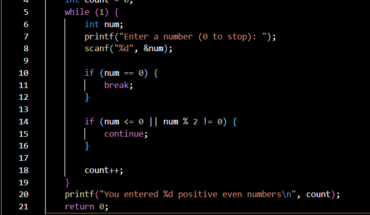Missing data is a common problem in data analysis. Fortunately, R provides powerful tools to handle missing values, including the zoo library and the na.approx() function. In this article, we’ll explore how to use these tools to interpolate missing values in R, with several practical examples.
Interpolation is a method of estimating missing values based on the surrounding known values. It’s particularly useful when dealing with time series data or any dataset where the missing values are not randomly distributed.
There are various interpolation methods, but we’ll focus on linear interpolation in this article. Linear interpolation assumes a straight line between two known points and estimates the missing values along that line.
The zoo library in R is designed to handle irregular time series data. It provides a collection of functions for working with ordered observations, including the na.approx() function for interpolating missing values.
Here’s the basic syntax for using na.approx() to interpolate missing values in a data frame column:
library(dplyr) library(zoo)
df <- df %>% mutate(column_name = na.approx(column_name))
Let’s break this down:
- We load the
dplyrandzoolibraries. - We use the
mutate()function fromdplyrto create a new column based on an existing one. - Inside
mutate(), we apply thena.approx()function to the column we want to interpolate.
The na.approx() function replaces each missing value (NA) with an interpolated value using linear interpolation by default.
Let’s start with a simple example of interpolating missing values in a vector.
# Create a vector with missing values x <- c(1, 2, NA, NA, 5, 6, 7, NA, 9) # Interpolate missing values x_interpolated <- na.approx(x) print(x_interpolated)
As you can see, the missing values have been replaced with interpolated values based on the surrounding known values.
Now let’s look at a more realistic example of interpolating missing values in a data frame.
# Create a data frame with missing values
df <- data.frame(
date = as.Date(c("2023-01-01", "2023-01-02", "2023-01-03", "2023-01-04", "2023-01-05")),
value = c(10, NA, NA, 20, 30)
)
# Interpolate missing values
df$value_interpolated <- na.approx(df$value)
print(df)
date value value_interpolated 1 2023-01-01 10 10.00000 2 2023-01-02 NA 13.33333 3 2023-01-03 NA 16.66667 4 2023-01-04 20 20.00000 5 2023-01-05 30 30.00000
Here, we created a data frame with a date column and a value column containing missing values. We then used na.approx() to interpolate the missing values and stored the result in a new column called value_interpolated.
By default, na.approx() will interpolate missing values regardless of the size of the gap between known values. However, you can use the maxgap argument to limit the maximum number of consecutive NAs to fill.
# Create a vector with a large gap of missing values x <- c(1, 2, NA, NA, NA, NA, NA, 8, 9) # Interpolate missing values with a maximum gap of 2 x_interpolated <- na.approx(x, maxgap = 2) print(x_interpolated)
[1] 1 2 NA NA NA NA NA 8 9
In this example, we set maxgap = 2, which means that na.approx() will only interpolate missing values if the gap between known values is 2 or less. Since the gap in our vector is larger than 2, the missing values are not interpolated.
Now it’s your turn to practice interpolating missing values in R. Here’s a sample problem for you to try:
Create a vector with the following values: c(10, 20, NA, NA, 50, 60, NA, 80, 90, NA). Interpolate the missing values using na.approx() with a maximum gap of 3.
Click here to see the solution
# Create the vector x <- c(10, 20, NA, NA, 50, 60, NA, 80, 90, NA) # Interpolate missing values with a maximum gap of 3 x_interpolated <- na.approx(x, maxgap = 3) print(x_interpolated)
[1] 10 20 30 40 50 60 70 80 90
- Interpolation is a method of estimating missing values based on surrounding known values.
- The
zoolibrary in R provides thena.approx()function for interpolating missing values using linear interpolation. - You can use
na.approx()to interpolate missing values in vectors and data frames. - The
maxgapargument inna.approx()allows you to limit the maximum number of consecutive NAs to fill.
Interpolating missing values is an essential skill for any R programmer working with real-world data. By using the zoo library and the na.approx() function, you can easily estimate missing values and improve the quality of your data.
Remember to always consider the context of your data and the appropriateness of interpolation before applying it. In some cases, other methods of handling missing data, such as imputation or deletion, may be more suitable.
Now that you’ve learned how to interpolate missing values in R, put your skills to the test and try it out on your own datasets. Happy coding!
-
What is interpolation? Interpolation is a method of estimating missing values based on the surrounding known values.
-
What is the zoo library in R? The
zoolibrary in R is designed to handle irregular time series data and provides functions for working with ordered observations. -
What does the na.approx() function do? The
na.approx()function in thezoolibrary replaces each missing value (NA) with an interpolated value using linear interpolation by default. -
Can I use na.approx() on data frames? Yes, you can use
na.approx()to interpolate missing values in data frame columns. -
What is the maxgap argument in na.approx() used for? The
maxgapargument inna.approx()allows you to limit the maximum number of consecutive NAs to fill. If the gap between known values is larger than the specifiedmaxgap, the missing values will not be interpolated.
- How to Interpolate Missing Values in R (Including Example)
- How to Interpolate Missing Values in R With Example » finnstats
- How Can I Interpolate Missing Values In R?
- How to replace missing values with linear interpolation method in an R vector?
- na.approx function – RDocumentation
We’d love to hear your thoughts on this article. Did you find it helpful? Do you have any additional tips or examples to share? Let us know in the comments below!
If you found this article valuable, please consider sharing it with your friends and colleagues who might also benefit from learning how to interpolate missing values in R.
Happy Coding! 🚀


You can connect with me at any one of the below:
Telegram Channel here: https://t.me/steveondata
LinkedIn Network here: https://www.linkedin.com/in/spsanderson/
Mastadon Social here: https://mstdn.social/@stevensanderson
RStats Network here: https://rstats.me/@spsanderson
GitHub Network here: https://github.com/spsanderson
Bluesky Network here: https://bsky.app/profile/spsanderson.com
Related





